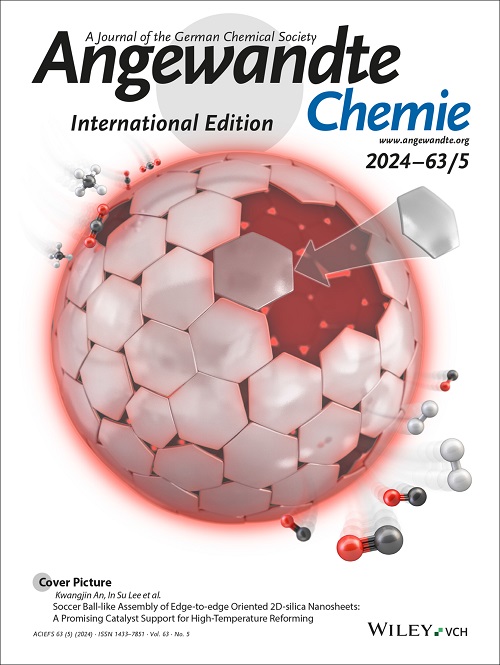Screened d-p Orbital Hybridization in Turing Structure of Confined Nickel for Sulfion Oxidation Accelerated Hydrogen Production
IF 16.1
1区 化学
Q1 CHEMISTRY, MULTIDISCIPLINARY
引用次数: 0
Abstract
The sulfion oxidation reaction (SOR) could offer an energy-efficient and tech-economically favorable alternative to the oxygen evolution reaction (OER) for H2 production. Transition metal (TM) based catalysts have been considered promising candidates for SOR but suffer from limited activity due to the excessive bond strength from TM-S2- d-p orbit coupling. Herein, we propose a feasible strategy of screening direct d-p orbit hybridization between TM and S2- by constructing the Turing structure composed of lamellar stacking carbon-confined nickel nanosheets. The optimized p-p orbit coupling between electron-injected carbon and S2- enables exceptional catalytic activity and stability for sulfion degradation and energy-efficient yet value-added H2 production. Specifically, it achieves a current density of 500 mA cm-2 at an ultralow potential of 0.67 V vs. RHE for alkaline SOR. Theoretical calculations indicate that the electron transfer from Ni imparts metallicity and a higher p-band center to carbon shells, thereby contributing to optimized p-p orbit hybridization and a thermodynamically favorable stepwise sulfion degradation. Practically, a two-electrode flow cell achieves an industrial current density of 1 Acm-2 at an unprecedented low voltage of 0.91 V while maintaining stability for over 300 hours, and exhibits high productivities of 3.83 and 0.32 kgh-1m-2 for sulfur and H2, respectively.封闭镍图灵结构中的筛选 d-p 轨道杂化,用于磺胺氧化加速制氢
亚硫酰氧化反应(SOR)可作为氧进化反应(OER)的替代品,为生产 H2 提供高能效和技术经济上的优势。基于过渡金属 (TM) 的催化剂一直被认为是 SOR 的理想候选催化剂,但由于 TM-S2- d-p 轨道耦合产生的键强度过大,因此活性有限。在此,我们提出了一种筛选 TM 和 S2- 之间直接 d-p 轨道杂化的可行策略,即构建由层状堆叠碳约束镍纳米片组成的图灵结构。电子注入碳和 S2- 之间优化的 p-p 轨道耦合使其在磺化降解和高能效、高附加值的 H2 生产方面具有卓越的催化活性和稳定性。具体来说,在 0.67 V 对 RHE 的超低电位下,碱性 SOR 的电流密度可达 500 mA cm-2。理论计算表明,镍的电子转移赋予碳壳金属性和更高的 p 带中心,从而有助于优化 p-p 轨道杂化和热力学上有利的逐步磺化降解。实际上,双电极流动池在前所未有的 0.91 V 低电压下实现了 1 Acm-2 的工业电流密度,同时保持稳定超过 300 小时,硫和 H2 的生产率分别达到 3.83 和 0.32 kgh-1m-2。
本文章由计算机程序翻译,如有差异,请以英文原文为准。
求助全文
约1分钟内获得全文
求助全文
来源期刊
CiteScore
26.60
自引率
6.60%
发文量
3549
审稿时长
1.5 months
期刊介绍:
Angewandte Chemie, a journal of the German Chemical Society (GDCh), maintains a leading position among scholarly journals in general chemistry with an impressive Impact Factor of 16.6 (2022 Journal Citation Reports, Clarivate, 2023). Published weekly in a reader-friendly format, it features new articles almost every day. Established in 1887, Angewandte Chemie is a prominent chemistry journal, offering a dynamic blend of Review-type articles, Highlights, Communications, and Research Articles on a weekly basis, making it unique in the field.

 求助内容:
求助内容: 应助结果提醒方式:
应助结果提醒方式:


